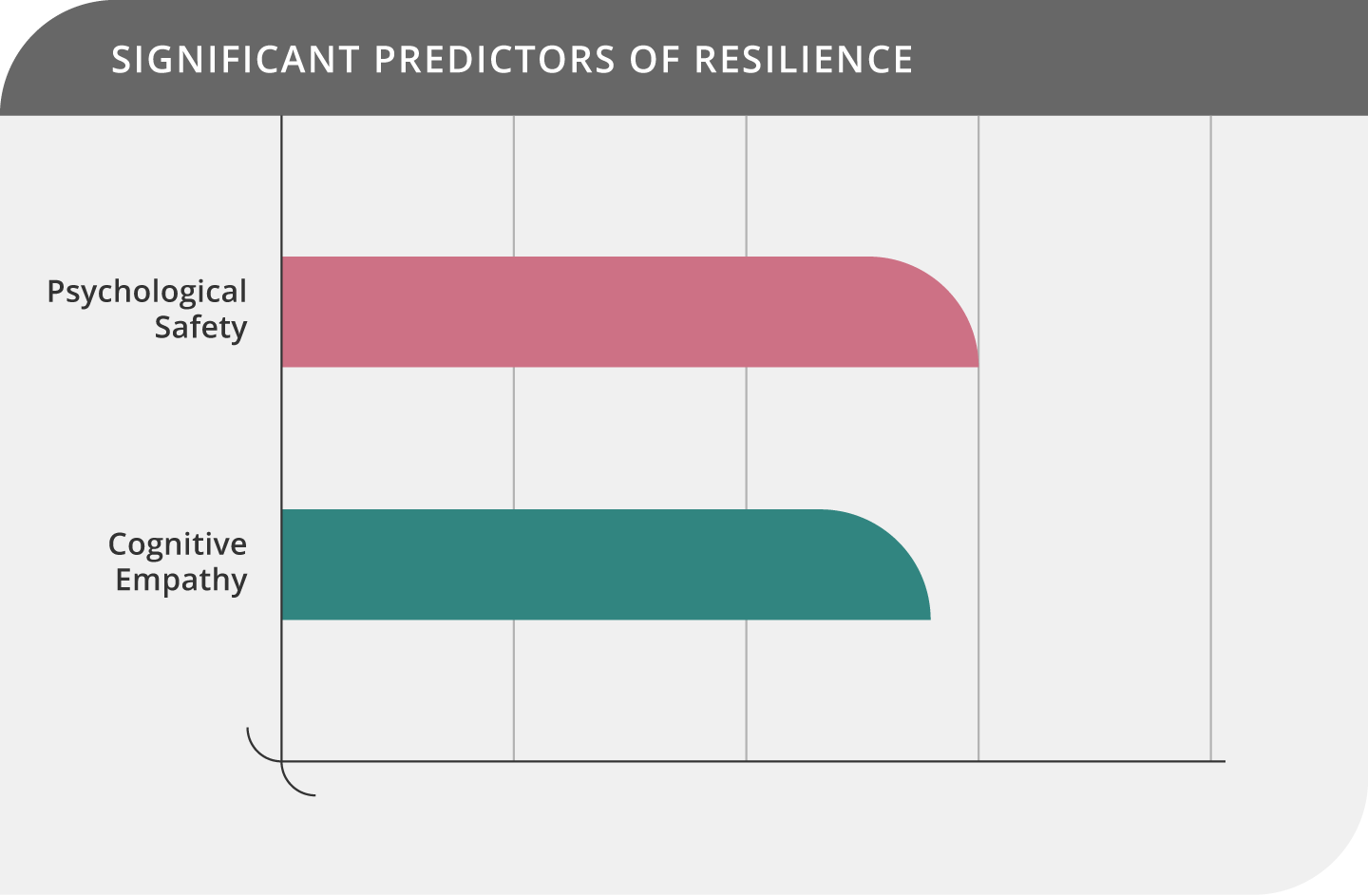Author: Tyler Phillips, Research Psychologist and Lead Content Specialist
Recently, we reported how individual-level empathy and group-level empathetic interactions combine to enhance resilience optimally. Findings like these highlight the important distinction, and interplay, between the empathetic capacities/behaviors of an individual and those that emerge in a group. To combat the epidemic of loneliness, it seems that the best defense may include both working on your own perspective-taking abilities, and doing your part to enhance the perspective-considering dynamics in your team at work.
Yet, neither individual empathy nor group communication are simple things. It could be that, when we look at other ways in which they aim to achieve connectedness, a different relationship with resilience might emerge. For example, empathy can take two forms: the affective kind (feeling and identifying with another’s feelings) and the cognitive kind (understanding another’s thinking and point of view). It was affective empathy that we examined in our previous report. Cognitive empathy, which can also improve individual and team performance, may work differently.
Similarly, the health of group communication can also be measured in a few ways. In our previous report, we measured it by looking at something we call ‘empathetic response style’, which refers to whether team members easily relate to one another’s emotions and tend to collaborate when making decisions. There are also other things to look at here — and an important one is ‘psychological safety’. A team is ‘psychologically safe’ if its members perceive and believe that it is perfectly fine to express their ideas and concerns, to speak up, to raise questions, to take risks, and to admit mistakes — all without fearing negative repercussions. It’s also, unsurprisingly, been found to benefit systemic performance. For example, teams higher in psychological safety tend to exhibit greater knowledge sharing, learning, creativity and innovation, and organizational commitment.
Given that both cognitive empathy and psychological safety have demonstrated impacts on workplace performance, we thought it would be useful to examine, and compare, their impact on resilience. In a group of over 550 individuals (with a relatively balanced gender distribution, spanning 18 industries and a wide age range), we analyzed their scores on our measures of cognitive empathy and psychological safety in terms of their predictive impact on our Neurozone® Resilience Index (NRI). The results of this analysis are in the graph below:

Note, firstly, that both cognitive empathy and psychological safety are significant predictors of resilience in this sample (and several others we have studied). What this means is that, if these individuals cultivate either one of these connective behaviors, their resilience is likely to improve. This makes sense for several reasons. Cognitive empathy enables us to understand each other, and so it reduces misinterpretation (and the conflict that may arise because of that) as well as our senses of isolation. Isolation can register to the brain-body system as a threat or stressor to our survival, hence its very real medical danger. Similarly, our sense of psychological safety in a group tells our brain-body system that the group’s threats are outside of it, not inside of it. This safety may also reduce our experiences of feeling isolated from each other, and so it may protect us from the stressors of disconnection. By not just preventing the negative, but also enhancing the positive (that is, increasing our sense of social support), cognitive empathy and psychological safety become instrumental in enabling our adaptability to life’s challenges — that is, our resilience.
Note, secondly, that psychological safety has a somewhat greater impact on enhancing resilience than cognitive empathy in this sample. There are a few ways we can interpret this. For example, we can look at the process of conversation. When you exercise your cognitive empathy, you are trying to understand another’s point of view. This requires listening to them. But what if that other person isn’t explaining their point of view, and so there’s little to listen to? If they are not voicing their thoughts — or if they are, but they are also partially censoring or editing themselves out of the fear of the consequences of what they say — then no matter how hard you try, you’re likely going to have some trouble understanding exactly what they’re thinking. So, one reason that, in this sample, psychological safety seems slightly more important than cognitive empathy for enhancing resilience could be down to the order in which effective conversations happen. First comes speaking (or the freedom to do so honestly), and second comes listening (or comprehension of each other’s thoughts). This is but one potential explanatory theory.
Another possible interpretation could be to do with the relative strengths of the ‘whole’ compared to the ‘parts’ (i.e., the group entity compared to the individuals) in terms of connective protection from stress-/threat-activation. Remember that cognitive empathy and psychological safety help move the brain-body system away from stress- or threat-based activation to do with isolation. In contrast, if these connectors are lacking, the brain-body system may be more prone to stress-based activation, either because a lack of understanding leads to conflict (low cognitive empathy) or because the group atmosphere is restrictive (low psychological safety). However, stress-based activation due to miscommunication between you and one other individual is arguably not as strong as stress-based activation due to non-communication between you and several other people. The latter scenario may carry a comparatively larger sense of threat. So, ensuring that this threat is removed may give a bigger boost to individual resilience than removing the threat of miscommunication that happens on a one-on-one level.
What this means is that, arguably, group-level empathetic or empathy-enhancing behaviors may do more for us, in terms of deactivating a rampant stress/threat response, than our individual empathetic behaviors. One person can only do so much when it comes to enabling the connectedness that enhances resilience; a group of people, it seems, can — and should — do more.